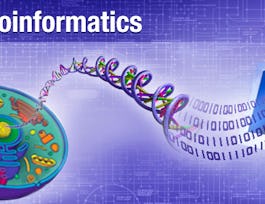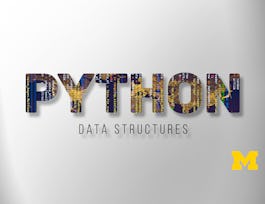We will learn computational methods -- algorithms and data structures -- for analyzing DNA sequencing data. We will learn a little about DNA, genomics, and how DNA sequencing is used. We will use Python to implement key algorithms and data structures and to analyze real genomes and DNA sequencing datasets.



Algorithms for DNA Sequencing
This course is part of Genomic Data Science Specialization


Instructors: Ben Langmead, PhD
Sponsored by IEM UEM Group
43,823 already enrolled
(905 reviews)
Skills you'll gain
Details to know

Add to your LinkedIn profile
8 assignments
See how employees at top companies are mastering in-demand skills

Build your subject-matter expertise
- Learn new concepts from industry experts
- Gain a foundational understanding of a subject or tool
- Develop job-relevant skills with hands-on projects
- Earn a shareable career certificate


Earn a career certificate
Add this credential to your LinkedIn profile, resume, or CV
Share it on social media and in your performance review

There are 4 modules in this course
This module we begin our exploration of algorithms for analyzing DNA sequencing data. We'll discuss DNA sequencing technology, its past and present, and how it works.
What's included
19 videos7 readings2 assignments
In this module, we learn useful and flexible new algorithms for solving the exact and approximate matching problems. We'll start by learning Boyer-Moore, a fast and very widely used algorithm for exact matching
What's included
15 videos1 reading2 assignments
This week we finish our discussion of read alignment by learning about algorithms that solve both the edit distance problem and related biosequence analysis problems, like global and local alignment.
What's included
13 videos1 reading2 assignments
In the last module we began our discussion of the assembly problem and we saw a couple basic principles behind it. In this module, we'll learn a few ways to solve the alignment problem.
What's included
13 videos1 reading2 assignments
Instructors

Offered by
Why people choose Coursera for their career




Learner reviews
905 reviews
- 5 stars
79.91%
- 4 stars
15.01%
- 3 stars
3.09%
- 2 stars
0.55%
- 1 star
1.43%
Showing 3 of 905
Reviewed on Jul 3, 2018
Very well prepared, from basics up to all commonly used techniques in bioinformatics. Prerequisites in Python is a plus, but not even necessary.
Reviewed on Mar 9, 2021
very engaging and well-presented course material.
intermediate difficulty while conveying the basics of how even recent real-world genome alignment and assembly tools work. great course design!
Reviewed on Jul 6, 2019
This is the best course so far in this specialization. I enjoyed the way both instructors explained the concepts using simple analogies. It was a really productive month for me!
Recommended if you're interested in Data Science

University of California San Diego

Peking University

University of Michigan

University of California San Diego

Open new doors with Coursera Plus
Unlimited access to 10,000+ world-class courses, hands-on projects, and job-ready certificate programs - all included in your subscription
Advance your career with an online degree
Earn a degree from world-class universities - 100% online
Join over 3,400 global companies that choose Coursera for Business
Upskill your employees to excel in the digital economy



